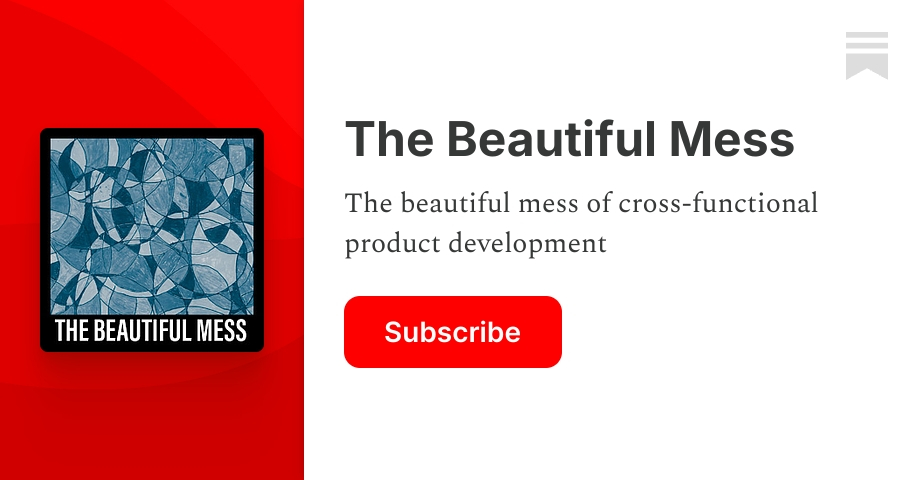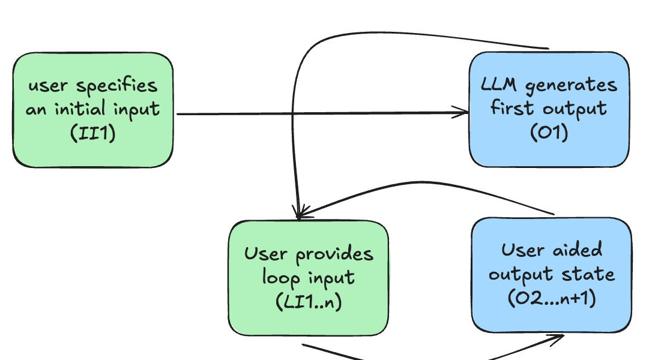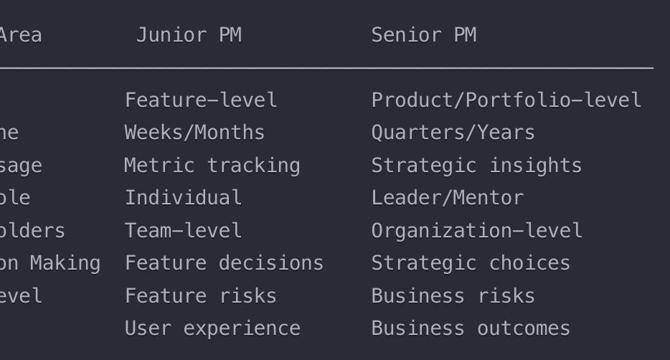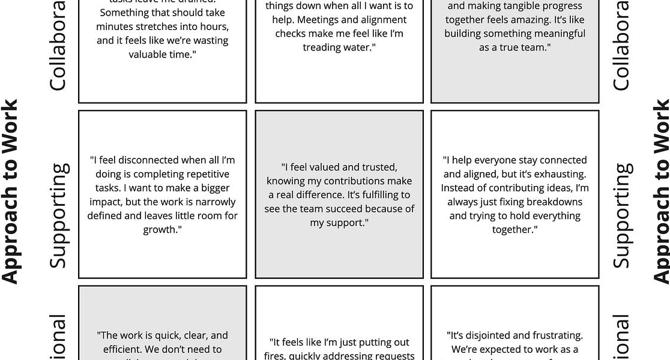Productivity News
Leah’s ProducTea
331

Image Credit: Leah’s ProducTea
Why you should make your AI product harder to use: The Egg Effect
- Making a product slightly more demanding can make it more appealing to users, according to behavioural scientists Michael Norton, Daniel Mochon and Dan Ariely.
- Their research shows that making a product harder to use can create a psychological investment that makes end products more valuable to clients. Also, when people help create things, they tend to value them more, whether the items are functional or recreational.
- The egg effect is an analogy taken from the 1950s, where cake manufacturers struggled to push their instant cakes onto the market because consumers felt there was no sense of achievement in merely mixing powder and water.
- When the egg was added, increasing the effort needed to bake the mix, sales began to rise for cake mixes made by Duncan Hines and General Mills.
- Yet, despite the research on human involvement and investment, many product designers appear to be moving in the opposite direction, particularly in behaviour-design tech products.
- AI products require user involvement, but designers need to find a balance between too much user input getting too burdensome and not enough input to create an investment in its use. When users add effort in training, customising and directing an AI system, they are more likely to trust the results and value the outcome.
- Some companies that have already taken user effort into consideration include Salesforce, which has an upfront investment to increase user adoption and renewal rates. Function of Beauty also has users conduct an extensive quiz to customise products and justify premium pricing.
- Betterment and Wealthfront require users to complete an extensive personal financial assessment to get customers to set specific life goals, connect existing accounts, and choose investment themes and justifying premium pricing.
- Glean, an enterprise AI search tool, succeeded by understanding that companies wanted to teach AI about their data and how they operate. By letting organisations put in the effort to train a system on their systems, it becomes more trustworthy and companies trust it more.
- Product teams must try to find areas where users can meaningfully contribute their expertise and figure out how to make user input feel valuable instead of burdensome.
Read Full Article
19 Likes
The Beautiful Mess
127

Image Credit: The Beautiful Mess
TBM 339: Update and Clarifications
- The newsletter is independent of his employer (Dotwork) and is not sponsored.
- The author has written this newsletter while working for three different employers.
- The newsletter has a paid workshop on Maven and a paid subscription option.
- Dotwork is a start-up in Austin and calls their product a tool for strategy development and deployment, goaling, portfolio management, etc.
- The author's current role at Dotwork is head of product, but the company is focusing on product design rather than mass promotion.
- Front-line teams should use the best tools for the job because a company should be able to customize them.
- The author enjoyed working at Dotwork because it gave them the chance to interact with other product leaders.
- The author's commitment entails sharing what he learns each week and inviting people to webinars or classes.
- The author has been working, writing, and sharing on several platforms without payment for almost 10 years and believes good things will come through this.
- The author believes karma comes around and that if you put valuable stuff out there, good things will come back eventually.
Read Full Article
7 Likes
Minis
39.6k

Image Credit: Minis
Why employees are resigning without backup offer
- Work-Life Balance & Mental Health: Employees now prioritize well-being over job security, unwilling to stay in toxic or stressful workplaces.
- Confidence in Job Market: Growth in freelancing, remote work, and skill-based hiring makes job transitions easier.
- Gen Z & Millennials' Mindset: Younger workers value growth, flexibility, and fulfillment over long-term stability.
- Post-Pandemic Perspective: The pandemic reshaped career priorities, emphasizing purpose and flexibility.
- Toxic Work Environments: Employees leave workplaces where they feel undervalued or overworked.
Read Full Article
498 Likes
The Beautiful Mess
67

Image Credit: The Beautiful Mess
TBM 338: 4 Core Product OS Design Competencies
- Having product operating system without key leader’s support won’t work and Product operating system means nothing without key leaders' full support and participation, Leadership and influence, Domain experience, Systems thinking, General operations and tooling are four core competencies that businesses possess while designing product OS.
- People with deep understanding of working on product teams will have evolved their intuition for how the work works, assumptions they made, and when and how collaboration needs to happen.
- According to his research, companies who get super nerdy about designing an operating system tend to have a strong history of leaders who care about this and they were more likely to write things down and solicit feedback.
- Leaders and influence, operations and tooling, systems thinking/design, and domain awareness are the necessary and diverse skills required for designing and evolving a product operating system.
- Combining these four skills, companies can explore potential traps and avoid poorly streamlined procedures which leads to the inefficient process and missed real needs.
- A good operations person doesn't love or hate tools, rather they focus on understanding stakeholder needs, stitching together systems, modelling data, and rolling out change.
- The process of product design needs stakeholder management, mapping workflows, stitching together systems, modelling data, and rolling out change, which are necessary to build an operation person's specialties.
- A product operating system must have strong domain awareness and leadership involvement, otherwise one will end up with a confident decision built upon shaky assumptions or optimized process no one adopts respectively.
- People with product designing experience realize when to automate and when to leave high touch, which makes them perfect candidates for product OS designing.
- Being skilled in storytelling, persuasion, and simplifying things are the requisites required to influence key leaders who might lack System thinking and domain knowledge.
Read Full Article
3 Likes
ADPList’s Newsletter
275

Image Credit: ADPList’s Newsletter
How to design for AI
- Designing for AI isn’t just about coding models or optimizing algorithms. This week, Ishaani Mittal unpacks her 7-step framework for designing AI experiences that balance technical rigor with human needs. The Core 7 Stages: Understand the capabilities of GenAI technology used; Understand the core need and final outcome that the user wants to achieve; Define the partnership between Humans and AI; Think in terms of user loops; Get ethical; Define the production requirements; Iterate on the design.
- Most use cases in the industry you will work on will not expose the general purpose model like GPT, Claude, Llama, etc., as is. Think at a high level about what modality of input/output the system can take/generate: text, image, audio, video.
- Understand the core need and final outcome user wants to achieve. Ask questions like, what is the job to be done? Does this particular use case have the potential to change the personas who currently work in this domain?
- To define the partnership between humans and AI, ask questions like, does the user generally enjoy doing this work and does technology better fit one of these partnerships?
- Think in terms of user loops, which are an interaction design paradigm that defines user actions in terms of inputs and outputs. The gap that bridges the inputs and outputs forms a single user loop.
- Get ethical. It's also important to take ethical considerations into account when designing AI experiences. Start by exploring what values and principles your organization believes in and then work to apply those values to the design of your product.
- Define the production requirements and ask yourself, what are the service-level definitions, how will the product scale, and what is the optimal infrastructure?
- Iteration is key. As you work through the steps of the design process, it’s important to take a step back and assess whether or not the product aligns with the initial goals and principles laid out during the product discovery phase.
- By following the 7-step framework to design for AI, you can balance technical rigor with human needs. It opens up a new world of possibilities and helps organizations tackle some of the most challenging problems.
- This is an impressive guide for designers to make AI products that don't just function—but inspire.
Read Full Article
16 Likes
Minis
2.9k

Image Credit: Minis
Busy or Fauxductivity?? All you need to know about this new work trend
- The term "Fauxductivity" describes the illusion of being productive without achieving real results. It highlights how employees often appear busy, particularly in remote or hybrid work environments, where digital monitoring and surface-level metrics like logged hours take precedence over tangible outcomes.
- Driven by fear of judgment, job insecurity, and a need for validation, employees may focus on looking productive rather than delivering meaningful work.
- This cultural shift can lead to burnout, job dissatisfaction, wasted time, and poor company performance, ultimately affecting career growth, motivation, and organizational success. Fauxductivity reflects a broader issue of prioritizing perception over real impact.
Read Full Article
10 Likes
The Beautiful Mess
224

Image Credit: The Beautiful Mess
TBM 337: Pirates and Garbage Cans
- Structured conflict resolution is common in legal disputes and international diplomacy but less common in internal business contexts.
- Admitting the need for help can be perceived as a leadership failure.
- Blurred accountability and boundaries make it risky to surface conflicts honestly.
- The parties in internal business conflicts don't need to work or live together.
- The Garbage Can Model proposes that decision-making in organizations is not a rational process and often conflicts linger in the organizational garbage can.
- The actual resolution of conflict often happens by accident or when someone with enough power happens to care.
- Pirate ships had many more formalized mechanisms for conflict resolution than your average corporation.
- Pirates couldn't afford the luxury of unresolved conflict, while businesses often can.
- Companies often make decisions to sustain organizational narratives, even if that means avoiding conflict.
- A company's culture determines the norms and 'meaning' that shape how conflicts are addressed.
Read Full Article
13 Likes
Lenny's Newsletter
135

Image Credit: Lenny's Newsletter
Tobi Lütke’s leadership playbook: Playing infinite games, operating from first principles, and maximizing human potential (founder and CEO of Shopify)
- Tobi Lütke is the founder and CEO of Shopify, a $130 billion business that powers over 10% of all U.S. e-commerce.
- Tobi remains deeply technical, frequently coding alongside his team, and is known for his unique approach to leadership, product development, and company building.
- Everyone has more potential than they realize. As leaders, it’s our job to help others see the best version of themselves, even if it means pushing them outside their comfort zone.
- Metrics are important, but they should support your decision-making, not drive it.
- Focus on things like joy, pride, and the satisfaction of a job well done.
- Work backward from a long time horizon: A 100-year perspective helps optimize for lasting impact over short-term gain.
- Disagreeing with someone might seem confrontational, but it builds trust when done constructively.
- You need both a positional game (long-term strategy) and tactics (short-term wins).
- A well-designed interface doesn’t just make a product easier to use—it can literally make the difference between success and failure.
- If you’re feeling scared to launch something, reframe it as an experiment.
Read Full Article
7 Likes
Minis
35.5k

Image Credit: Minis
4 questions to avoid asking in a first-round interview
- Can I work remotely or hybrid? – While common post-pandemic, asking this upfront may signal a lack of flexibility, especially with return-to-office mandates.
- What’s the salary for this role? – Compensation discussions are better suited for later stages to avoid appearing money-focused too soon.
- What’s the promotion timeline? – This can make you seem more interested in career progression than the current role.
- What does the company do? – Asking this shows a lack of research, making you seem unprepared.
Read Full Article
96 Likes
Minis
2k

Image Credit: Minis
4 reasons to leverage off-peak hiring seasons for career success
- Less Competition: Off-peak seasons, such as holidays, see fewer job applicants, offering less competition and greater chances to secure roles, especially through referrals.
- Networking Opportunities: Quiet periods are ideal for networking—attend informal events or reconnect with contacts to uncover hidden job openings.
- Skill Enhancement: Use this time to upskill through online courses or short-term projects, boosting your qualifications and making you a stronger candidate.
- Post-Rush Advantage: Applying after the hiring rush can give you an edge, as companies reassess their hiring needs and may give more attention to your application.
Read Full Article
17 Likes
Minis
37.2k

Image Credit: Minis
Top 5 resume lies hiring managers always catch
- Fake Job Titles: Tweaking your title to sound more impressive? Employers verify roles through references, and mismatched skills give it away.
- Inflated Skills: Listing advanced skills but struggling with basic questions? Employers will test your abilities, and you’ll be exposed.
- Fudged Employment Dates: Altering employment dates to cover gaps is exposed during background checks.
- Exaggerated Achievements: Claims like “increased sales by 300%” need real data to back them up; otherwise, they’ll be caught.
- Fake Degrees: Listing degrees you never earned is easily caught during education verification. Honest resumes are key to gaining trust.
Read Full Article
91 Likes
The Growth Catalyst
164

Image Credit: The Growth Catalyst
How AI is Redefining Product Management
- AI is rapidly emerging, and product management professionals need a measured, selective approach to its adoption by focusing on relevant developments.
- Adopting a classification framework to assess how to look at tasks in the context of AI is beneficial.
- Lead-Edit Framework can classify PM-led tasks and PM-edited tasks.
- Junior PMs tasks can benefit from AI, which can make them 2-3x more effective.
- AI can handle tasks that are repetitive and have lower stakes, such as summarization and documentation, allowing PMs to focus on strengthening their core competencies.
- The core competencies that AI cannot replace include product strategy, stakeholder management, user empathy, conflict resolution, and creative thinking.
- In senior product roles, AI can help in market analysis and brainstorming for tasks such as positioning and pricing.
- Product vision, critical problem-solving, team leadership, and managing performance require human judgment and empathy hence human-led tasks.
- PMs need to use AI as a productivity multiplier and build new systems and processes using effective prompts, automation, and exploration in design.
- Product leadership needs to create new guidelines for AI usage and performance management to keep up with the competition's AI usage.
Read Full Article
8 Likes
The Beautiful Mess
189

Image Credit: The Beautiful Mess
TBM 336: Product OS Design Tips and Principles
- Product leaders operate under a product operating system that is implicit in some companies but explicitly designed in others. It involves a dynamic mix of leadership, service design, organizational design, systems thinking, human factors, behaviour design, cultural anthropology, communication design, organizational development, and (even some) game design.
- The product operating system is a designed product platform that includes multi-sided marketplaces that cater to customers, leaders, managers and front-line teams. Success breeds new challenges, so companies must continue to adapt, experiment and solicit feedback to ensure everyone’s alignment.
- Senior leaders should own the operating system. They should be curious about the product operating system and start with rituals that consist of who should interact with whom, how often and toward what end, stating insights, context, tools needed and shared artefacts to make the operation seamless.
- While developing processes, do not take into account every single exception. If you try to cover every specific exception, the stringency of processes becomes too heavy. Design processes to solve problems on the fly, and consider adding clarity and structure to norm exceptions if they happen often enough.
- IKEA effect is real, so teams prefer to be included in designing a solution. Ensure you mix well-trodden approaches with unique twists to avoid making it hard for newcomers to connect.
- Think in terms of consistent interfaces, not consistent processes. Different teams use different approaches, but as long as there is reasonable consistency in other forms of interaction, it should be fine.
- Every team has stubbornness quotas, but do not exceed them. While some teams are stubborn about a certain approach, be open to adjusting if the present approach is no longer effective. Great teams highlight transparency but don’t feed on lone areas of stubbornness that could divide the team.
- Do not rely on templates so much that the real deal is lost. Thinking is more valuable, so encourage everyone to provide their ideas. Create an example repository where you can highlight how different groups achieved the same desired result.
- Making the system work and establishing a habit is like a personal habit, it takes time to stick. It’s important to foster conditions where people can see their job’s value, borrow habits from others and are open to feedback while not feeling underestimated.
- Ensure that the product operating system encourages experimentation, ignores false precision and enhances goal-setting without being over-bureaucratic while enabling constraints and limiting constraints produced some desired outcome and the decisions are made visible.
- Understand that operating systems are a set of constraints. Some are limiting while others are enabling. Enabling constraints provide your team with better situations while limiting constraints make working conditions more challenging.
- Beware of the dependency inflection point. When a company exceeds the dependency tipping point, there’s a need to support new collaboration patterns or suppress dependencies.
- Scaffolds are temporary and should provide structural support when things go wrong. Remove scaffolds once the problems are resolved to avoid normalizing informal communication processes.
- Strike a balance between insiders and newcomers because insiders tend to be habitual and risk-averse while newcomers know nothing about the current processes and need more time to adapt. Endless forms completed by front-line teams lead to reports without bearing reality. They need to know how decision-making is based on the information they fill in.
- Match cycle length to rate of change in market conditions. Focus on the essential work and have a well-formed strategy that evokes coherence sliding to action. Avoid cascading goals that rely on org charts; rather, have relative stable inputs and set goals based on the input.
- Conduct retrospective evaluations on the full history of an effort to better understand the players involved, how they collaborated and what they achieved. Avoid resting goals or strategies on cascading plans that follow org charts which cause work to be too prescriptive.
Read Full Article
11 Likes
Minis
21k

Image Credit: Minis
The 5 secrets to getting promoted even in a tough job market
- Deliver Results: Consistently exceed expectations and show your contributions directly impact company success.
- Take on Challenges: Volunteer for high-visibility projects to demonstrate leadership potential.
- Network Effectively: Build relationships with senior leaders to increase your visibility.
- Adapt Quickly: Be known for thriving under pressure and embracing change.
- Communicate Ambitions: Clearly express your career goals and seek feedback on the promotion path.
Read Full Article
77 Likes
Minis
2.3k

Image Credit: Minis
What is 'revenge quitting' & why is it becoming a workplace trend in 2025
- Revenge quitting, a rising workplace trend in 2025, involves employees resigning out of frustration to send a clear message to employers.
- Driven by factors like low pay, lack of recognition, stagnant careers, and poor work-life balance, this trend is particularly popular among Gen Z and mid-level professionals. Many are sharing their reasons publicly, highlighting toxic work environments and burnout.
- With improved job opportunities, workers feel empowered to leave unsatisfying roles. This phenomenon serves as a wake-up call for companies to prioritize employee well-being and recognition or risk losing talent in an increasingly competitive market.
Read Full Article
25 Likes
For uninterrupted reading, download the app